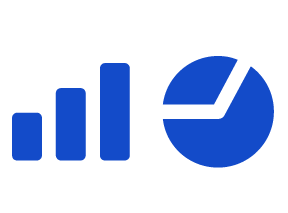Written by Landytech
3 Jul 2023In the face of fierce industry competition and regulatory pressures, trustees today face a squeeze on fees and significant margin pressures. It is forcing them to find operational efficiencies and differentiate their offering in a way that enables them to protect and increase their margins.
Whilst much has been covered about the digital revolution and the role digitalisation can play in futureproofing trust administration, there is another equally as critical revolution in coexistence: the data revolution. We operate in a fast-paced, increasingly real-time world, where outdated data equals heightened risk and missed opportunities. This means that the ability to manage and use data effectively is one of the key driving forces behind many innovations in trust administration. Quick sourcing, aggregation and reconciliation of data have become core capabilities that trustees must possess to realise operational efficiencies and meet the increasingly complex expectations of clients.
Here are three ways the data revolution is helping trustees futureproof their operations and expand their service offering.
1. The fuel for automated bookkeeping
Timely and accurate data
With automation, trustees are no longer reliant on waiting to receive information from wealth managers and custodians in various PDF statements and file formats. With a platform built on open architecture connectivity principles that can facilitate direct data connections to these financial institutions, trustees can receive a daily feed of client transactions and positions, which can be fed automatically into their accounting system. This data is not only timelier and more accurate, but it also allows for an exceptions-based reconciliation process, reducing manual intervention.
Cost efficiencies
Investing in a platform capable of automated data sourcing may seem like an added expense at first, but the savings in the long run far outweigh the initial outlay. By eliminating manual data entry and reducing the likelihood of errors, significant cost savings can be made on labour and reduced risk of mistakes incurring costly regulatory fines. The less time spent on repetitive bookkeeping tasks also means that this time can be reinvested into other higher value work.
Focus on value-added work
Employees often have to manually read and key in contract notes or paper statements, a timely, expensive, and unengaging process. This exacerbates key person risk of that employee leaving the business and siloed knowledge being lost. A much more attractive proposition for staff is to leverage their expertise to add value and oversight, making sense of the accounts and making sure things are correct.
I also genuinely love the product. I think it’ll change the lives of many, many investors as well as save people time and a lot of money.
2. The path to near-real-time investment monitoring
Flagging IPS breaches
Timely data sourcing and analysis enable trustees to fulfil their fiduciary duty and answer client questions decisively and with clarity. But with such a time lag between quarter end and the point trustees receive portfolio reporting, it can be difficult for trustees to know whether managers are staying within investment guidelines. To facilitate a clearer picture, timely data enables trustees to set up daily limits monitoring, with alert notifications and pre-warning levels, ensuring that investment managers operate within investment policy statements (IPS) and breaches can quickly be flagged and rectified.
Independent data sourcing
When it comes to receiving performance information from investment managers directly there are inevitably questions around the impartiality of managers’ self-reported information. Accessing independent data by connecting directly with banks and custodians allows trustees to replicate whole portfolio structures from the ground up using actual market data, line-by-line, for a truly independent view of portfolio performance.
Pleasing the auditor
This independent data also appeals to auditors, who value consistency in pricing methodology. Using independently sourced data from multiple institutions allows trustees to consistently specify the pricing methodology, preventing frustrating conversations with multiple custodians who price things differently for the same security.
The end of quarterly reporting
For many years, trustees have become accustomed to the convention of quarterly investment reporting, despite this periodicity never having been a regulatory requirement. Trustees can be forced to wait up to eight weeks after quarter end to receive any kind of reporting from their consultants or investment managers. With clients already expecting ad hoc reporting and preferring ongoing dialogue based on the latest information, there is growing pressure on trustees to find ways of reducing this time frame through automated data sourcing and on-demand reporting.
3. The foundation of family office services
Consolidated reporting, at scale
Supporting the families and family offices you work with by providing consolidated reporting, including on private and alternative assets, can provide clients with previously inaccessible insights, further amplifying the value trustees can deliver. It also enables trustees to be more proactive in conversations around wealth and succession planning. Ultimately, it's only by accounting for all assets across liquid financial assets, private equity, real estate, collectibles and more that you build up a comprehensive, granular picture of a client or family's liquidity position and concentration across the portfolio.
Previously family office services have been seen as high touch for trustees, but as demand shifts from balanced portfolios to more complex asset allocations, trustees must now look beyond the reports of their investment managers and consultants to provide complete view of client wealth.
Managing wealth across ownership structures
Families almost always have multiple separate legal entities to manage their wealth and account for succession planning. As their wealth grows, these structures can become ever more complex. Family members may own differing stakes in the entities and each entity may have its own separate reporting requirements. Families may also want to consolidate reports across the portfolios and company structures in which they have a stake. Trustees with the right technology in place can enable families to get full transparency into complex, multigenerational family structures from legal entities, subsidiaries, and portfolios, right down to individual assets and liabilities.
Providing fee breakdowns
Having timely data enables trustees to control and report on fees much more effectively. Whether management fees, custody fees, transaction fees or anything else being charged to the trust, they can all significantly impact performance. Complete transparency on fees can help family offices and UBOs identify areas where they could renegotiate high fees and ensure they are being charged what was contractually agreed.
It is time to unlock the power of your data
For most trustees, staff are burdened with time-consuming and error-prone bookkeeping and reporting tasks that predominantly stem from the absence of a timely and accurate flow of automated data. They also rely on periodic reports that lack the flexibility trustees need to effectively monitor client portfolios and quickly flag any IPS breaches. This contributes to a state where trustees do not have the timely data to fuel informed decision-making and time is lost that could be spent on deepening client relationships.
By taking advantage of leading technology, trustees can move away from onerous, time-consuming manual data processes (including bookkeeping and reporting) and build the operational efficiencies and differentiated service offering they need to futureproof their business. Not only will the data revolution enable them to strengthen their relationships with their existing clients, but it will also put them in a great position to win new clients.
In conclusion, the data revolution is transforming the way trustees manage their operations, monitor investments and serve their clients. By embracing this revolution and investing in the right technology, trustees can unlock the full potential of their data, streamline processes, reduce costs and differentiate their service offerings. In doing so, they can not only protect and increase their margins but also ensure they remain competitive in a rapidly evolving industry.



.png?width=1200&height=800&name=HubDB%20Investment%20Hub%20Graphic%20(1).png)


.png?width=800&height=550&name=Asset%20graphics%20for%20website%20(2).png)


